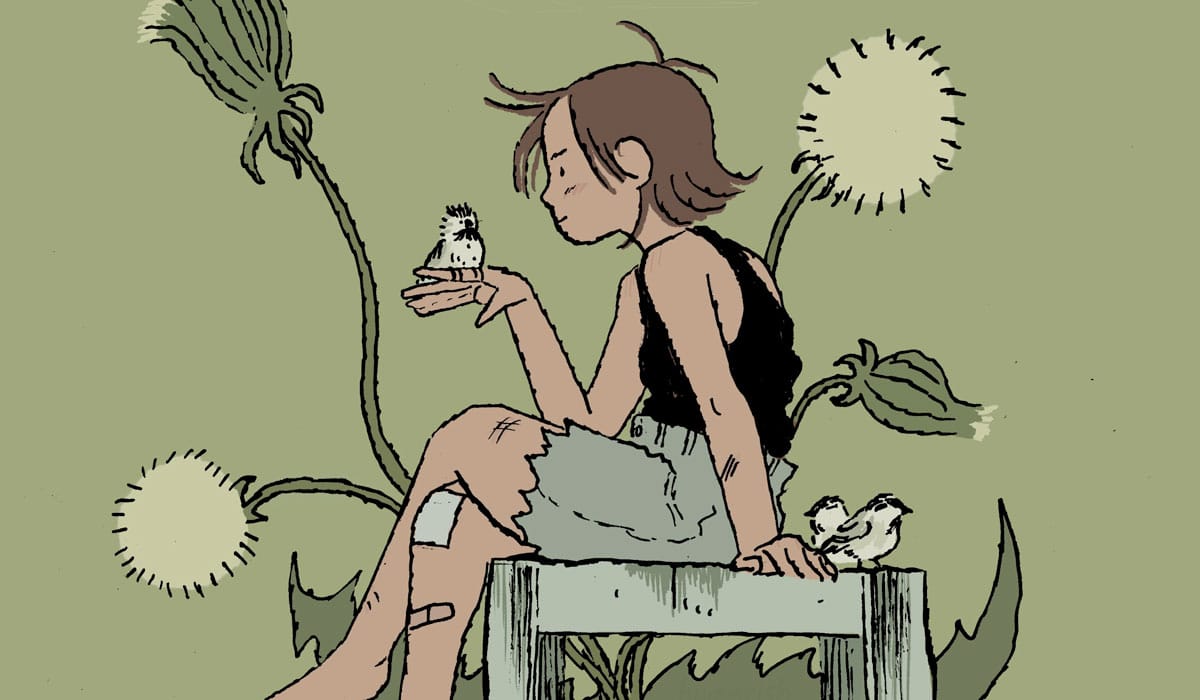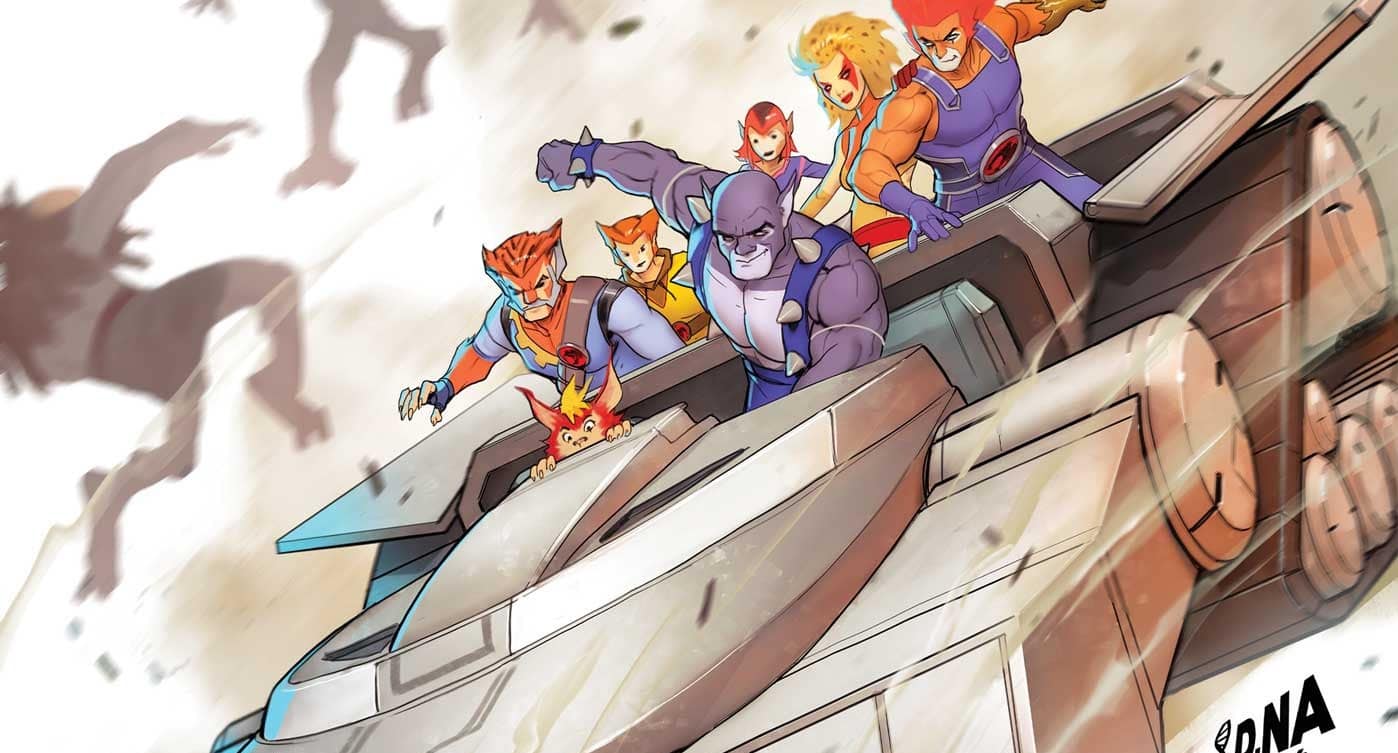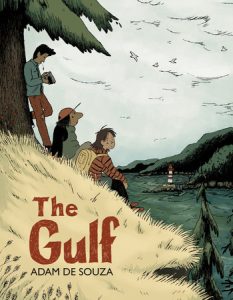
Written and illustrated by Adam de Souza
Published by Tundra Books / $12.99
Runaways. Natural wonders. The dangers of camping without plans. Adam de Souza’s graphic novel is a melodrama of independence and reliance, where trouble becomes a key unlocking the past. The past is always there, pushing them forward with the reason each of these teens had to leave home. But as they struggle with the gnarl of reality interrupting their plans, the kids in The Gulf must face themselves in the present. Where they are now and what they’re working toward.
Figure out life? No thanks. The plan is to disappear before the last day of school, to start living in an isolated, island commune instead of going to prom. Oli, the story’s central vagabond, wishes to embrace both the romantic and the pragmatic. To follow her heart, but to a place of security. Her desire to answer to no one is so inflamed by the pressure the world puts on kids her age to assimilate, it drives her and her friends (whether they know it or not) to make their move to the commune an act of secrecy.
If no one can know you’re there, how do you ask for directions when you’re lost? Who will clean the grit and mud out of lacerations and treat your abrasions if you slip on the rocks? That said, I appreciate that these independent teens will stand up for themselves. Oli knocking a bully to the floor in one isn’t a good indication she has her emotions under control. Although, the jerk she flattened, I don’t know if he was asking for it but he sure did set it off. Choosing fight instead of flight when pushed into the red is definitely Oli. Her method of perseverance is, when buried, to grow through the concrete.
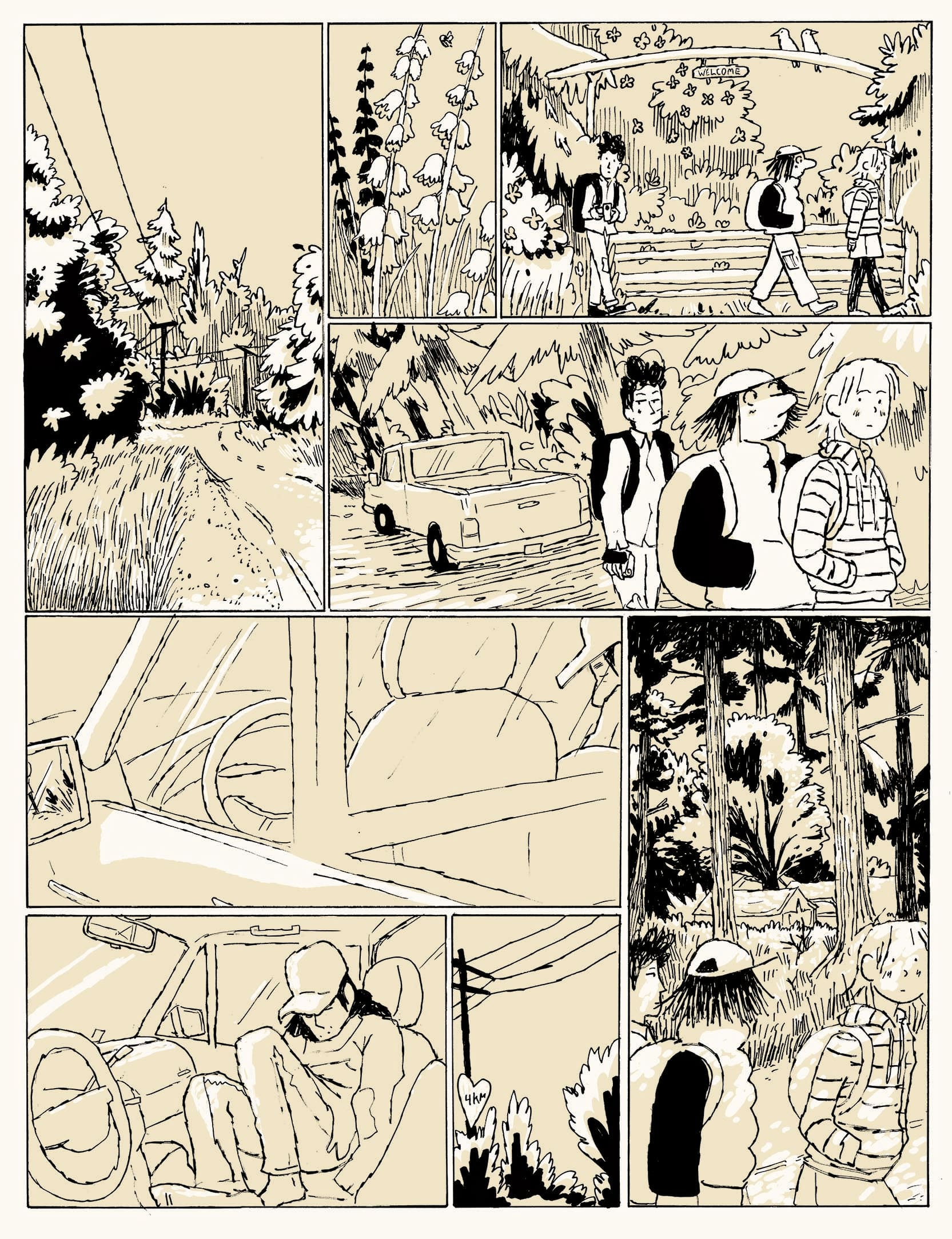
The natural beauty is as big a character in The Gulf as any of the kids, and is treated with the same kind of flexibility. Not rendered excessively over-detailed. Left loose and sketchy, worked to a point far beyond a draft, but not so overworked as to be concrete. Creating an environment- a feel- rather than reproducing “the environment.” The spirit of the woods over the woods themselves. Total Supermonster feels. The characters are wild, free, expressionist, charmingly goofy. Their simplicity accentuates the emotion of the moment, but they each are still developed to have a visual character, not just a recognizable look but personality.
Ultimately de Souza captures everything I love about Disa Wallander’s little people, dropped into environments that could’ve been doodled by Michel Rabagliati. The Gulf also recalls The Hard Tomorrow, a bit aesthetically and a bit thematically. Eleanor Davis is maybe more book club than book fair. The Tamaki sisters’ This One Summer, then, or Roaming: the primary concern being the dynamic between some friends while they go out and travel an unlikely path, together. A satisfying middle ground between the cartoony, exuberant side of a pub like Silver Sprocket and the quieter approach a book from Drawn and Quarterly might take.
The composition of panels, their pacing, seems willy-nilly en masse. But reading makes it quite clear the layouts are telling a story rather than reflecting the impulse of their creation. Packed in but not crowded when the story is flowing, expansive or shattered as the mood lifts and sinks, cut to widescreen format for a dramatic dream sequence. The plot moves unhaltingly forward, but the story (as told visually) contracts and balloons based on emotional speed. It feels very natural, a reaction to the relative importance of each moment as it comes.
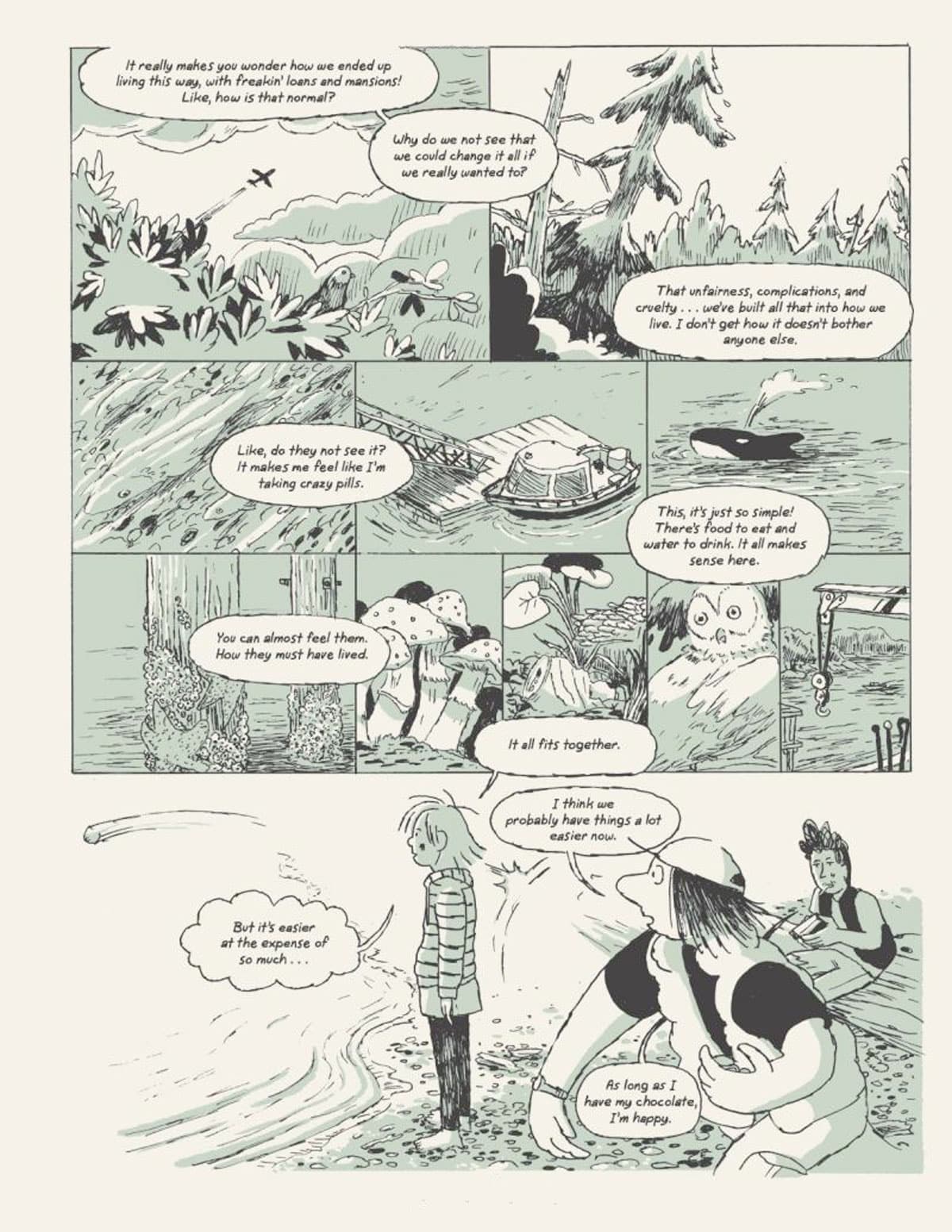
Bear with me here, but the pages with conflicting visual messages do succeed, and even reflect a film style: taoist arthouse. Chinese cinema that observes the philosophy of Chinese painting (looking at you, King Hu). The Gulf‘s dialog is small and nature is grand, surrounding it, de Souza composing pages with overwhelming respect to the negative space (as all great cartoonists do). The dialog is the focus of the plot, stepping stones across a river of background images- whose meaning to the story come from their pairing with the text instead of internally. The plight of the individual is proportionate to the importance and presence of the natural world.
And it is a book about fitting in. The “gulf” both describes a place sea-apes purportedly call home and the distance between what a rational mind can endure and the banal oppression of modern society. De Souza brings the feeling to the place, making a strong, clear argument for both being a realist and a dreamer.
Beyond questioning the nature of who labor benefits, The Gulf speaks to the pressure put on the individual. Step back for a moment from the high school setting and its connections to being forced to choose who you have to be whether you’re to ready or not. Oli just wants to be. She’s rejecting not only normate expectations, but also the counterculture requirement of a hobby, craft, or interest that is of equal spiritual value to the financial security of a career. Commodifying bohemianism is what that is. Your calling needing to be legitimized in comparison to capitalism sucks. Needing a calling sucks. Having to have a calling instead of just being respected for being alive is bullshit.
Why does the unadorned slice of life story reign supreme over all other types of storytelling? Their magic is more elusive than magic: they capture the importance of moments outside of our lives’ narratives. The just being. The Gulf is a pilgrimage, seekers who travel to sanctuary in search of answers. But life says: of equal importance to Oli’s achieving understanding is farting in the tent. Smashing rocks together. Falling asleep on a log and maybe having a dream. What slips past the plot are moments at the heart of the story. The times that matter aren’t all ones you remember. Yet de Souza also suggests that, like skipping rocks across still water, like cup of coffee, like dandelion puff, or a tree that’s just a tree, confrontation with the gravity of being alive in this burning world of ours is a mundane, meaningful, inescapable, everyday activity.
The Gulf is available from Tundra Books and wherever finer graphic novels, books, and comics are sold.
Footnote:
It would be nice to alleviate the stigma YA carries with supposedly “adult” readers categorically unwilling to give it a shot, but perhaps more useful to the medium of comics would be other publishers being able to adopt one of the better YA practices: affordable, enticing books. YA books are traditionally cheaper so that kids can afford them. And the history of picture books is a rich, beautiful, visual story. So why can’t books for adults also be well printed and inexpensive? Look, I’m the last person demanding indie publishers charge less. I just want YA to share their secret with the rest of the class. This book from Tundra, or this one from Levine Querido, or this one from Holiday House, I learned they weren’t for me long after I’d already fallen in love with them. If ideas like the ones presented in The Gulf are for kids and not adults, it’s no wonder today is in constant crisis, and hope lies in tomorrow.



